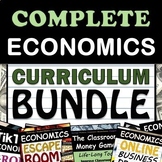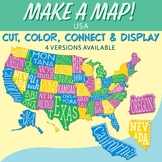27 results
U.S. History Common Core L.11-12.5 resources

50 States: Emoji Pictionary Guessing Game | United States of America
Celebrate the 50 States or any patriotic holiday season with this fun emoji guessing game! Think of it as Pictionary style riddles that need to be solved, but only using emojis. This fun activity is perfect for a classroom celebration, staff party, or use it at a family gathering! Whether you make it an individual race or a group competition, your crew will love having fun with this American patriotic activity!⭐️ Check out the America Patriotic Guessing Game!⭐️ Get the Full Growing Bundle of Emo
Subjects:
Grades:
Not Grade Specific
Types:
Also included in: American History U.S. History Bundle: Beginnings through the 1850's
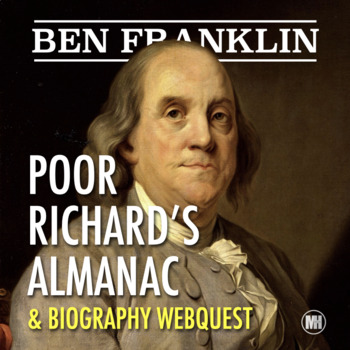
BENJAMIN FRANKLIN: Poor Richard's Almanac & Research Project
Ben Franklin had many pithy sayings and quotes in his publication entitled Poor Richard's Almanac. Study the wit and wisdom of Ben Franklin by analyzing and explaining 18 different quotes from his writings. Students will learn more about Ben Franklin's life, and benefit their own lives as they apply these pithy life principles. Also included is a graphic organizer for students to research the personal life and historical events of Ben Franklin.What's Included:20 different segments with quotes
Subjects:
Grades:
5th - 12th
Types:
Also included in: American History U.S. History Bundle: Beginnings through the 1850's
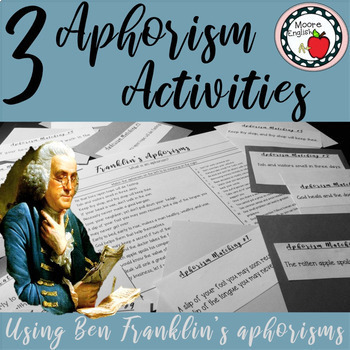
3 Aphorism Activities with Ben Franklin's Aphorisms (Matching and Inquiry Cards)
Benjamin Franklin's Poor Richard's Almanac is a seminal American text, perhaps best known for its use of aphorisms. In order to help my students understand aphorism, I designed three activities. First, I built a matching worksheet. Included in this resource you will find a paper-pencil version and a fully editable, self-grading Google Form. This worksheet is perfect for checking for understanding, independent practice, or homework. I also use this with visual and verbal learners. For my tactile,
Grades:
9th - 12th
Types:
CCSS:

6 Tools for Teaching FDR's Four Freedoms Speech / Print + Digital / 68 questions
President Franklin D. Roosevelt's 1941 State of the Union is best remembered as the Four Freedoms Speech. The historical context of this speech coupled with Roosevelt's vision for a better world make the speech memorable, teachable, and relevant. As an English language arts teacher, I am always looking for opportunities to help students analyze rhetoric, work with informational and nonfiction texts, and focus on complex texts that still resonate with modern readers. The Four Freedoms Speech acco
Grades:
11th - 12th
Types:
CCSS:

Thomas Paine's The Crisis No. 1 Questions, Prompts, SOAPTone, and Google Form
Thomas Paine's famed The American Crisis is a classic piece of American rhetoric, and using the text in history or English language arts is a great way to expose students to foundational documents and seminal texts. This lesson includes an excerpt from The Crisis No. 1 with opportunities for rhetorical analysis, writing, and test prep. Includes analytical and rhetorical writing prompts and an easy-to-use rubric, analysis questions, and SOAPSTone analysis. The 20+ reading questions come in severa
Subjects:
Grades:
9th - 12th
Types:
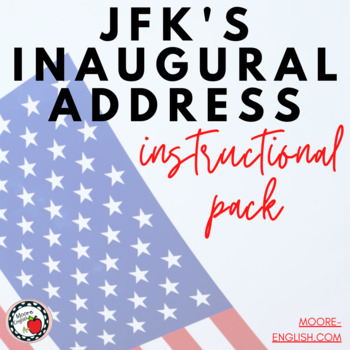
JFK's Inaugural Address Instructional Pack / Print + Digital / 45+ questions
Before students ever read President John F. Kennedy's Inaugural Address, they know: "Ask not what your country can do for you—ask what you can do for your country."Building on this prior knowledge is a great way to engage students in reading and analyzing this speech. Because of its brevity, rhetoric, and continued relevance, this is a great text for close reading in the classroom. As an English language arts teacher, I am always looking for opportunities to help students analyze rhetoric, work
Grades:
11th - 12th
Types:
CCSS:

USA Emoji Pictionary Guessing Game | America & Patriotic Edition
Celebrate any patriotic holiday season with this fun emoji guessing game! Think of it as Pictionary style riddles that need to be solved, but only using emojis. This fun activity is perfect for a classroom celebration, staff party, or use it at a family gathering at the 4th of July! Whether you make it an individual race or a group competition, your crew will love having fun with this American patriotic activity!⭐️ Get the Full Growing Bundle of Emoji Games and save big! Enjoy holidays & mor
Subjects:
Grades:
Not Grade Specific
Types:
Also included in: American History U.S. History Bundle: Beginnings through the 1850's
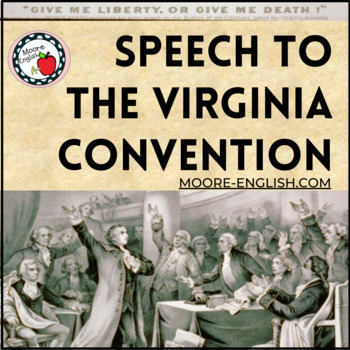
"Speech at the Virginia Convention" Questions, Prompts, and SOAPSTone Analysis
Patrick Henry's famed "Speech at the Virginia Convention" is a classic piece of American oratory, and using the text in history or English language arts is a great way to expose students to foundational documents and seminal texts. This lesson includes opportunities for rhetorical analysis, writing, and test prep. Includes analytical and rhetorical writing prompts and an easy-to-use rubric, analysis questions, and SOAPSTone analysis. Includes a fillable .pdf, Google Slides, and Google Form. Incl
Subjects:
Grades:
9th - 12th
Types:
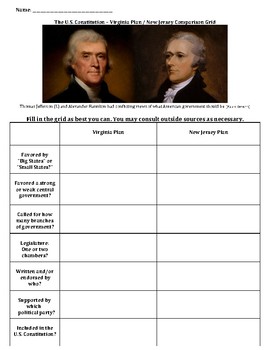
The Constitutional Convention – New Jersey / Virginia Plan Comparison Grid
When delegates from the twelve attending states gathered in Philadelphia during the Summer of 1787 (Rhode Island sent no representatives), the convention's outcome was far from certain. Its official purpose was to reform the Articles of Confederation. However, for many of the men who came, mere reforms would not be enough.This side-by-side comparison grid explores the chief ideological conflict of the US Constitutional Convention: Big States vs. Small States. By exploring the New Jersey and Virg
Subjects:
Grades:
6th - 12th, Higher Education, Adult Education
Types:
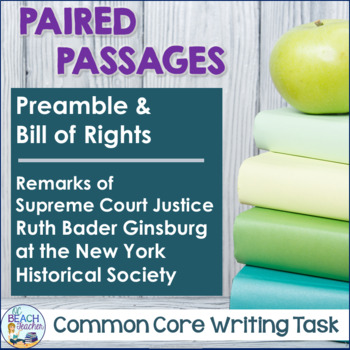
Paired Texts - Preamble, Bill of Rights, Speech by Ruth Bader Ginsburg
In this lesson, which incorporates science of reading strategies, students complete close readings of the Preamble to the Constitution, the Bill of Rights, and a speech by Ruth Bader Ginsburg. Then, they synthesize their understanding of the texts and write a short analytical essay requiring them to analyze a central idea.This 26-page printable resource includes the following:explicit lesson plan with identified Common Core ELA Anchor Standardsanticipation guidecontextual reading guidesthink alo
Subjects:
Grades:
9th - 12th
Types:
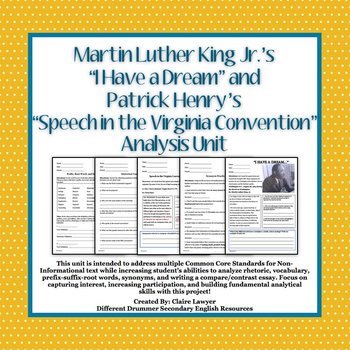
"I Have a Dream" and "Speech in the Virginia Convention" Analysis Unit
Contains everything you need to teach an interesting, dynamic, analytical unit on Martin Luther King, Jr's "I Have a Dream" and Partick Henry's "Speech in the Virginia Convention."
This unit contains the following:
*Vocabulary Practice from "Speech in the Virginia Convention"
*Prefix, Root Words, and Suffix Practice using words from "Speech in the Virginia Convetion"
*Historical Context and Background for Revolutionary time period including questions on the Virginia Convention, Continental Co
Grades:
9th - 12th, Higher Education, Adult Education

AP®US Government Unit 1.5 - Ratification of the Constitution (Short Answer, T/F)
Unit 1.5 of the AP® curriculum emphasizes compromise & negotiation - both the compromises necessary to ratify the United States's constitution, as well as the ongoing role that negotiation and dialogue continue to play in its government.This worksheet consists of two sections, each designed to challenge and improve your students' understanding of the Constitutional Convention: Section 1 contains two short answer/identification questions about the role(s) played by the convention's main perso
Subjects:
Grades:
11th - 12th, Higher Education
Types:
Also included in: AP® US Government - Comprehensive Full-Year Accompanying Curriculum
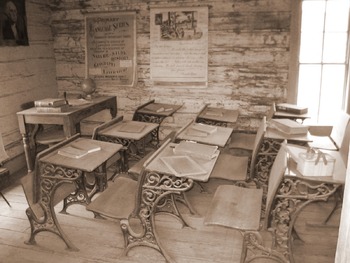
Historian For A Day
In this activity students try their hand at being historians. Examining bank checks, they draw their own conclusions about the lives of a father and son. By exploring this "mystery," they see more clearly that history is both fact and fiction.
Subjects:
Grades:
9th - 12th
Types:
CCSS:
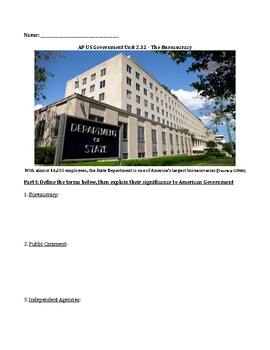
AP® US Government Unit 2.12 - The Federal Bureaucracy
Unit 2.12 of the AP® curriculum focuses on the federal bureaucracy, the so-called "Fourth Branch" of government.This nine-question ID/definition worksheet explores the vocabulary of Commissions, Agencies, Civil Servants, Government Corporations, "Iron Triangles" and more to help students better understand the role that unelected policymakers play in the day-to-day operation of US government. Special attention is also paid to reforms imposed on the Bureaucracy by the 1883 Pendleton Civil Service
Subjects:
Grades:
11th - 12th, Higher Education
Types:
Also included in: AP® US Government - Comprehensive Full-Year Accompanying Curriculum
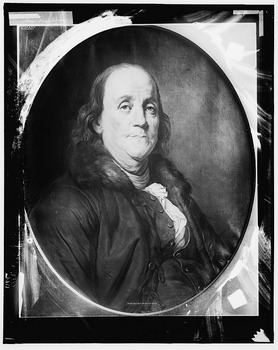
Power Plays: Delegated, Shared, Reserved
What do Frankenstein and the framers of the Constitution have in common? In this activity, students consider the analogy between Frankenstein trying to form a living being without creating a monster and the framers trying to structure a strong federal government without overpowering state government.
Subjects:
Grades:
9th - 12th
Types:
CCSS:
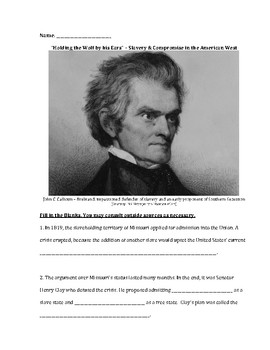
"Holding the Wolf by his Ears" – Slavery and Compromise in the American West
Not long before his death in 1826, Thomas Jefferson famously described America's relationship with slavery as "(H)aving a wolf by the ears...we can neither hold him, nor safely let him go." Decades later, his words proved prophetic, as the unresolved moral and legal questions surrounding slavery escalated into a series of factional disputes which threatened to tear the young republic apart. Featuring important historical figures and terms such as, Henry Clay, John C. Calhoun, the Missouri Compro
Grades:
6th - 12th, Higher Education, Adult Education, Staff
Types:
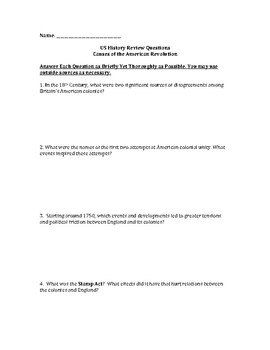
Causes of the American Revolution (Short Answer Activity)
The British Empire was the greatest military power of its time, yet its naval might was not enough to maintain the loyalty of its American colonies. Yet, how did events gradually transform these disparate political entities into a united nation?This U.S. History review sheet traces the causes of the American Revolution, and the colonies' gradual moves towards greater union. It consists of seven short answer questions that cover both the long-term causes and immediate triggers of the Revolutionar
Grades:
10th - 12th, Higher Education
Types:

Making It Faster
As students study the mid 1880s, when the Industrial Revolution was well under way, this activity provides a quick but powerful simulation of the impact of mass production. Students apply both craft and mass production methods in constructing chains made of paper links, and then compare the results.
Subjects:
Grades:
9th - 12th
Types:
CCSS:
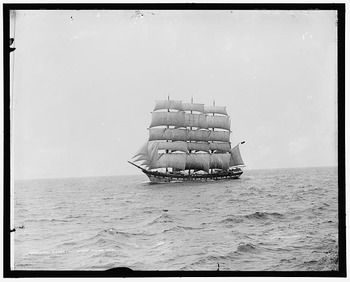
I"ll Go to the Ends of the Earth for You
What were the risks and possible benefits of the European voyages of exploration during the 1400's and 1500's? In this activity, students play the roles of European rulers trying to decide whether to support various expedition proposals. The activity is most effective when used before studying the voyages, for it helps to make the human drama of the "age of exploration" more real to students.
Subjects:
Grades:
9th - 12th
Types:
CCSS:
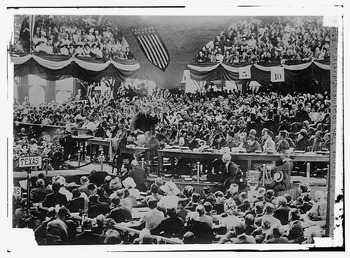
Progressive Thinking
In cooperative learning groups, students teach each other the basic goals of the Progressive party, using the party's platform of 1912. Then they create cartoons illustrating progressive beliefs. Finally, they explore the question "What did the Progressives ever do for you?"
Subjects:
Grades:
9th - 12th
Types:
CCSS:

Race & Racism in America - How did We Get Here? (Fill-in-The-Blanks Worksheet)
"How did We Get Here" is a mini-curriculum devoted to investigating the roots of institutionalized racism in the modern United States. This 10-item Fill-in-The-Blanks exercise is based upon the series' 1800-word first installment, which begins with the Civil War's end in 1865. What were the "Civil War Amendments" and "Radical Reconstruction?" When did the last Union Army troops withdraw from the South? Why was Andrew Johnson impeached? What was the Jim Crow Era? This activity seeks to pro
Subjects:
Grades:
6th - 12th, Higher Education, Adult Education
Types:
CCSS:
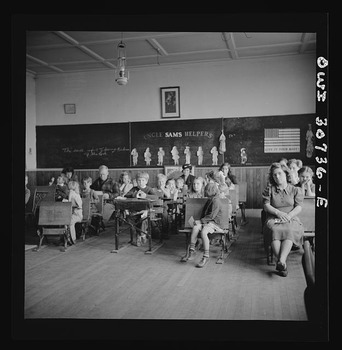
Limiting Freedom: The Sedition Act
What limits, if any would students be willing to place on government"s power to restrict individual freedoms? In this activity they answer that question with respect to a case in 1800, and then apply their reasoning to a recent situation.
Subjects:
Grades:
9th - 12th
Types:
CCSS:
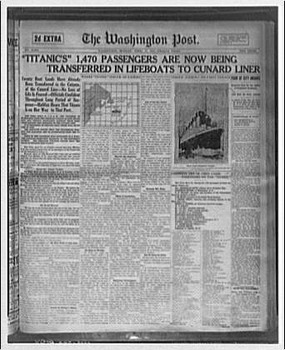
Creating a Newspaper on the 1920's
To capture the excitement and tensions of the1920's, students work in groups to create newspapers reflecting events and life during the twenties.
Subjects:
Grades:
9th - 12th
Types:
CCSS:
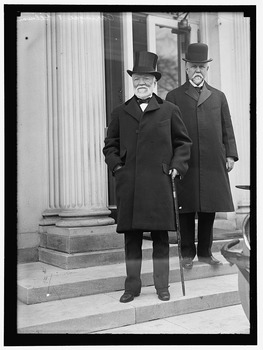
Captains of Industry
Playing the role of industrialists and workers in the late 1800s and 1900s, students write letters to each other expressing differing viewpoints on the impact of industry.
Subjects:
Grades:
9th - 12th
Types:
Showing 1-24 of 27 results

